Guide to the Latest Concrete Testing Methods and Equipment
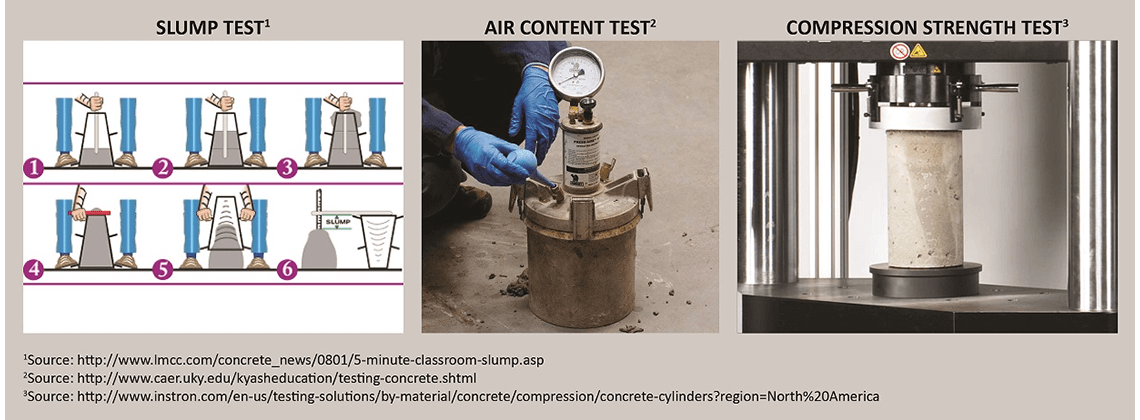
Concrete – it’s the backbone of our cities, the foundation of our homes, and the material that forms the infrastructure of our modern world. But how do we ensure that this vital building material meets the highest standards of quality and durability? Welcome to the world of concrete testing, a critical process that guarantees the strength and safety of our concrete structures.
From skyscrapers touching the clouds to the roads that connect us, the health of concrete structures is of utmost importance. Concrete testing helps us achieve this by providing a methodical approach to assess the quality of concrete, ensuring that structures stand tall and strong for years to come.
Key Takeaways
-
Concrete test is essential to ensure building durability and involves evaluating both fresh and hardened concrete.
-
Various equipment, such as compression machines, non-destructive tools & cylinder molds are used for sample preparation and handling.
-
Leading manufacturers offer a wide range of quality products with comprehensive customer services.
The Significance of Concrete Tests
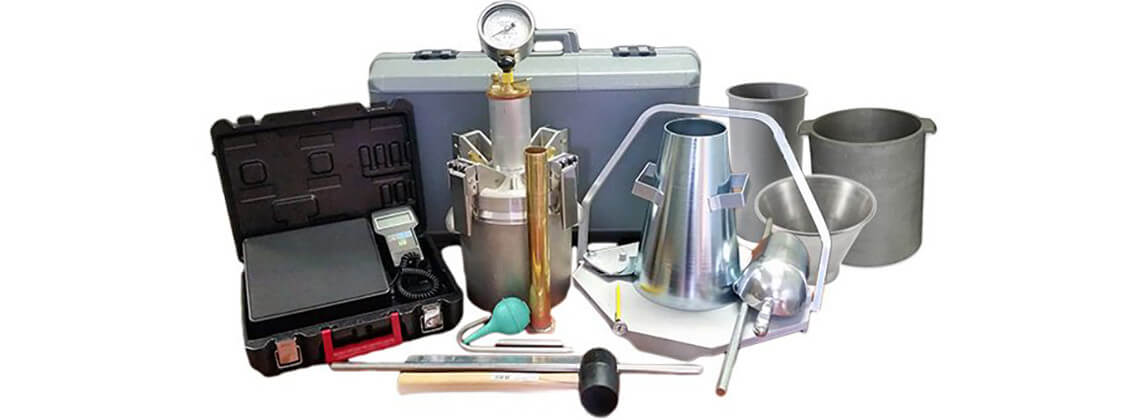
Concrete testing serves a significant role in the durability of our buildings, with lab testing equipment serving as the safeguard. Just as a knight’s sword undergoes meticulous preparation before battle, concrete also undergoes thorough evaluation to ensure its resilience and durability before it becomes a part of our buildings.
Conducting concrete testing is akin to the art of sculpting, where both fresh and hardened concrete are carefully refined and evaluated. From fresh concrete that’s as malleable as clay, to hardened concrete that’s as robust as a complete sculpture, each form of concrete has its unique tests to ensure quality and durability.
Fresh Concrete Testing
Testing fresh concrete involves checking the initial state of the concrete and evaluating key characteristics such as:
-
Temperature
-
Air content
-
Unit weight
-
Compressive strength
This is a crucial part of the line of concrete testing, ensuring the material’s workability, which is often measured using the slump test.
The air content in fresh concrete is identified using a process reminiscent of a potter molding clay under pressure, known as the ‘pressure method’. The temperature also plays a significant role in determining the consistency of fresh concrete, much like how a sculptor must consider the ambient temperature while working with clay.
Hardened Concrete Tests
Testing hardened concrete is comparable to an artist examining their completed artwork for any cracks or flaws that could compromise its integrity. Testing hardened concrete involves assessing its compressive strength, flexural strength, and non-destructive characteristics. This process gives us a comprehensive understanding of the concrete’s ability to withstand bending or flexural stresses, akin to examining the tensile strength of a steel sculpture.
Using non-destructive testing methods, we can inspect our ‘concrete sculpture’ without damaging its surface. This is achieved through devices such as rebound hammers and ultrasonic detectors, which provide an in-depth analysis of the concrete’s quality.
Thus, hardened concrete testing is like putting our sculpture through the final inspection before showcasing it to the world.
Types of Concrete Test Equipment
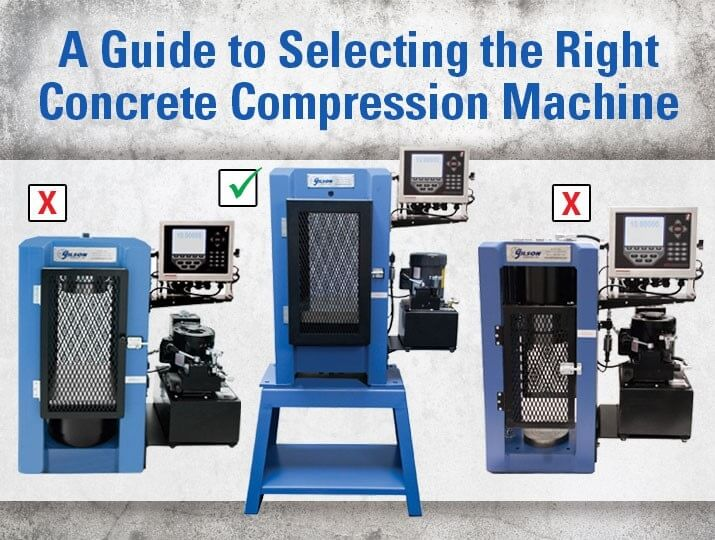
Much like an artist requires a range of tools to craft their masterpiece, concrete testing demands a diverse selection complete range of equipment to guarantee the integrity of our buildings. From concrete testing machines that test the strength of concrete, similar to the way a sculptor tests the firmness of their clay, to non-destructive tools that assess the quality of hardened concrete without causing any damage, much like an artist inspecting their sculpture without a scratch.
In the vast canvas of concrete testing equipment, including concrete lab testing equipment, companies like Humboldt and ELE International stand out as the masters of compression testing machines, offering a complete line of tools that meet all testing needs. Their equipment caters to both fresh and hardened concrete, ensuring that our ‘concrete sculptures’ meet the highest industry standards.
Compression Machines and Accessories
In concrete tests, concrete and compression testing machines serve a similar purpose to a sculptor’s chisels and hammers – indispensable tools for shaping and refining our work. These machines are used to test the compressive and flexural strength of concrete samples, much like how a sculptor tests the strength and durability of their material.
Just as a chisel chips away at a block of marble under pressure, a compression machine applies force to a concrete sample, monitoring the maximum load of force until the sample fails. This peak load is then used to calculate the compressive strength of the concrete, offering insights into the behavior of the material under stress. These machines come in a variety of types, from manual to automatic, to meet different testing requirements.
To assess the flexural and transverse strength of concrete samples, specially designed concrete beams are used, much like a sculptor using specific tools to create different textures and finishes.
Non-destructive Testing Tools
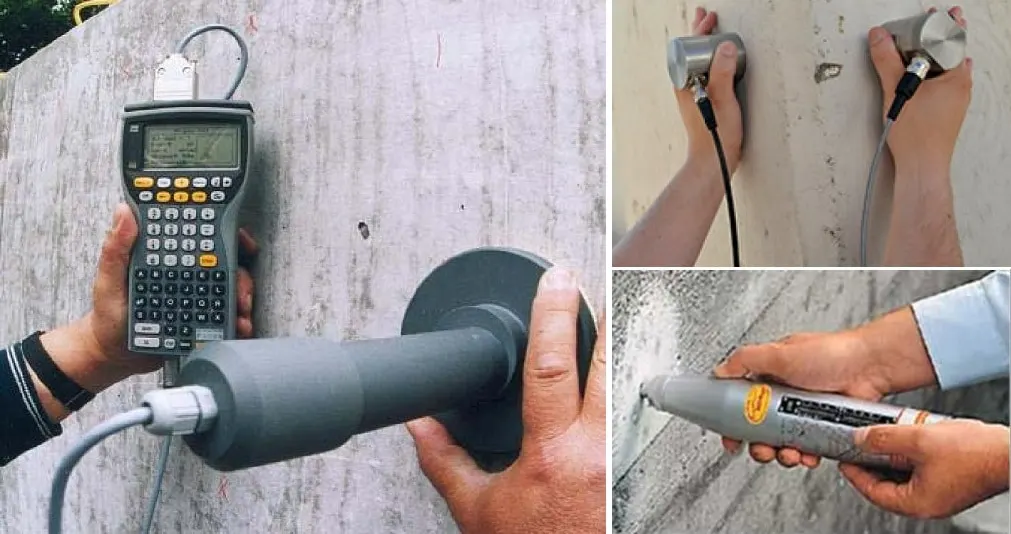
In concrete testing, non-destructive tools function similarly to an artist’s magnifying glass, enabling a close examination of the ‘sculpture’ without inflicting any damage. These tools, such as concrete test hammers, are used to conduct in-situ evaluations of concrete structures, providing us with valuable insights into their quality.
Imagine you are an artist, and your sculpture has a hidden crack that’s not visible to the naked eye. Non-destructive testing tools, such as rebound hammers and ultrasonic devices, are designed to detect these hidden flaws. A rebound hammer measures the surface hardness of the concrete, similar to an artist tapping their chisel on the sculpture to assess its hardness. Ultrasonic devices, on the other hand, measure the time it takes for an ultrasonic pulse to travel through the concrete, revealing any hidden voids or defects, much like an artist running their fingers over the sculpture to feel for any irregularities.
Concrete Sample Preparation and Handling
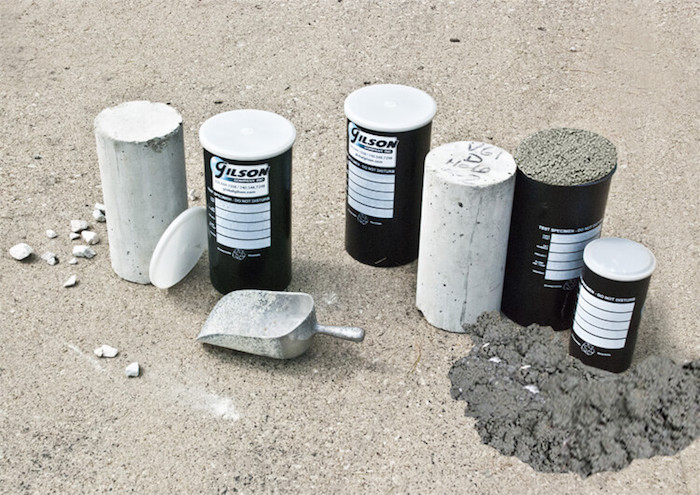
Crafting a masterpiece not only demands talent but also careful preparation and handling of materials. Likewise, concrete testing necessitates precise sample preparation and management to ensure accurate representation of the mix and appropriate handling. This process is facilitated by the use of cylinder molds and concrete cubes, akin to an artist’s molds and cubes that give shape to their artistic vision.
Just like how an artist needs a controlled environment to mold and shape their clay, concrete samples also require a controlled environment for curing. Curing tanks and boxes provide this controlled environment, maintaining specific temperature levels to ensure optimal curing conditions for the samples. Thus, sample preparation and handling in concrete testing is like setting the stage for a grand performance, ensuring that every element is in place for a successful show.
Cylinder Molds and Concrete Cubes
In the art of concrete test, cylinder molds and concrete cubes are like the artist’s canvas and frame, providing a controlled and consistent base for our work. These molds and cubes are used to create uniform samples for testing, ensuring that the samples accurately represent the concrete mix.
Much like an artist choosing the right canvas for their painting, selecting the right materials and dimensions for cylinder molds and concrete cubes is crucial. These molds and cubes are usually made from durable plastic to withstand the pressures associated with concrete setting, and their dimensions are critical in ensuring accurate test results.
Thus, cylinder molds and concrete cubes are vital tools in our concrete testing arsenal, providing a consistent and reliable base for the testing machine our ‘concrete masterpiece’.
Curing Boxes and Tanks
Just as a painter needs a controlled environment to let their masterpiece dry, concrete samples also need a controlled environment for curing. Enter the curing boxes and tanks, the unsung heroes of concrete testing. These devices provide a controlled environment for concrete samples to cure, ensuring accurate test results.
There are various types of curing boxes and tanks used in concrete testing, such as Perfa-Cure boxes and curing tanks or cabinets. These devices maintain a consistent temperature, and in doing so, they aid in preventing moisture loss from the concrete specimens, thereby supporting optimal concrete curing conditions. Just like how an artist carefully protects their artwork while it dries, these curing boxes and tanks safeguard our ‘concrete artwork’ during the curing process, ensuring that it reaches its full potential.
Key Procedures in Concrete Test
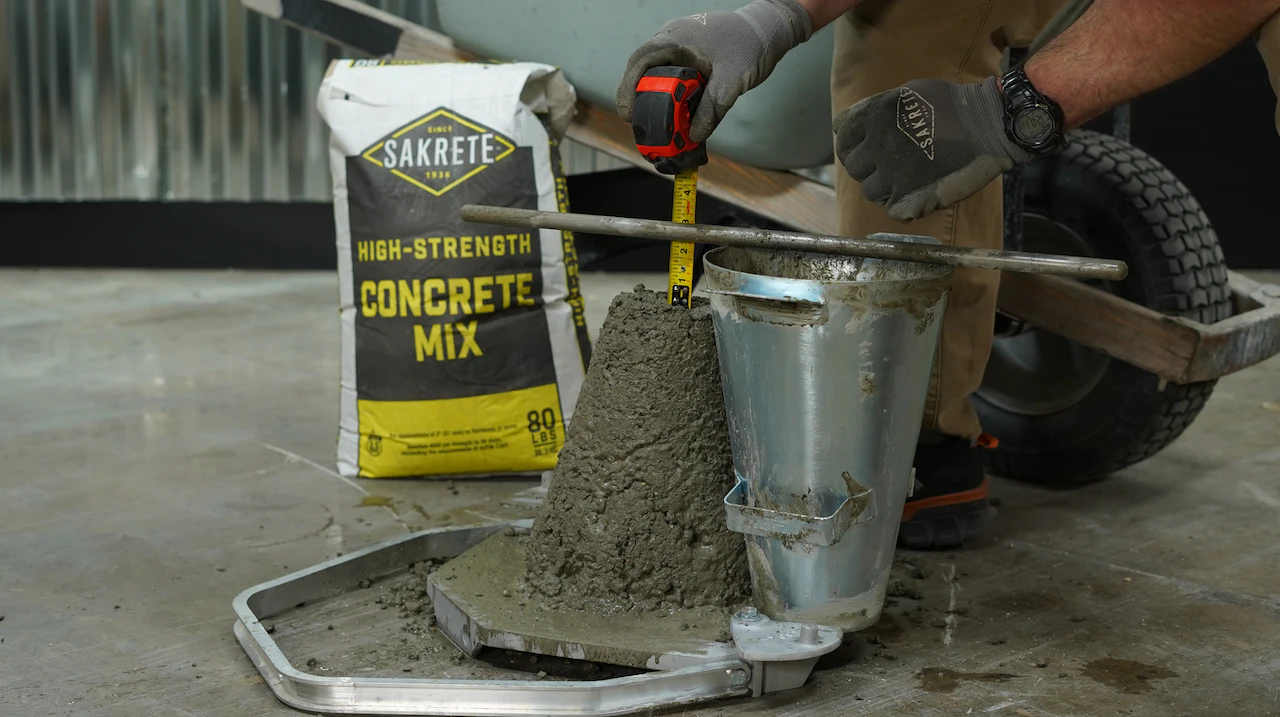
With our ‘concrete canvas’ prepared, we can now proceed to the key procedures in test concrete. These procedures, such as the slump test, air content test, and penetration resistance test, are like the brushes and colors an artist uses to bring their vision to life.
Each test serves a unique purpose. Here are three tests commonly used in concrete testing:
-
The slump test: Determines the workability of the concrete.
-
The air content test: Determines the durability and freeze-thaw resistance of the concrete.
-
The penetration resistance test: Determines the initial and final setting times of the concrete.
These tests are essential for ensuring the quality and performance of concrete.
Together, these tests provide a comprehensive picture of the concrete’s quality, much like how an artist’s brushstrokes, colors, and sketches come together to create a masterpiece.
Slump Test
The slump test in concrete tests is akin to an artist testing the viscosity of their paint. It measures the workability of fresh concrete, ensuring that it has the right consistency for ease of handling and placement.
The procedure for conducting a slump test is like an artist preparing their canvas. Here are the steps:
-
Clean and moisten the slump cone.
-
Fill the cone with fresh concrete in three layers.
-
Remove the excess concrete.
-
Lift the cone, allowing the concrete to settle.
-
Measure the slump.
Much like an artist checking the thickness of their paint before applying it to the canvas, the slump test ensures that the concrete has the right consistency for the task at hand.
Air Content Test
The air content test in concrete testing is similar to an artist checking the transparency of their colors. It determines the amount of entrapped air in fresh concrete, which greatly affects its durability and resistance to freeze-thaw cycles.
This test uses concrete air meters, a pressure meter on a known volume of concrete, and measures the change in pressure to determine the air content, much like an artist adjusting the opacity of their colors to achieve the desired effect. Moreover, the equipment required for the air content test, such as a clean, functional pressure meter, is as crucial to the concrete tester as the artist’s brush is to them.
Penetration Resistance Test
The penetration resistance test in concrete test is akin to an artist etching a sketch, providing an outline for the final piece. It measures the initial and final setting times of concrete, which are essential for proper curing and scheduling construction activities.
This test is conducted by driving a metal probe into the hardened concrete and measuring the resistance, much like an artist etching lines into their canvas. The equipment required for this test includes a Windsor Probe test machine or a steel rod for penetration, similar to the different tools an artist uses for etching.
Advanced Techniques in Concrete Test
Just as an artist applies advanced techniques to perfect their work, concrete testing also adopts advanced methods to ensure the highest quality. These techniques include fiber-reinforced concrete testing, which improves the strength and crack resistance of the concrete, and self-consolidating concrete testing, which enhances workability and placement.
These advanced techniques are like the artist’s special skills, adding a unique touch to their work. Fiber-reinforced concrete testing is like using mixed media in art, combining different elements to create a stronger and more interesting composition.
On the other hand, self-consolidating concrete testing is like using fluid art techniques to create a smoother and more fluid artwork.
Fiber Reinforced Concrete Testing
Fiber-reinforced concrete testing is like adding texture to a painting, enhancing its visual appeal and depth. This type of concrete incorporates fibers, such as steel or synthetic fibers, to augment its robustness and resilience.
This testing evaluates the performance of fiber-reinforced concrete using ASTM C1609, a method designed to assess the flexural performance of the concrete. It’s like an artist using a specific technique to add texture to their painting, providing a unique touch that enhances the overall strength and durability of their masterpiece.
Self Consolidating Concrete Testing
Self-consolidating concrete testing is like an artist experimenting with fluid art techniques. This type of concrete is a highly flowable cement mix that does not require mechanical vibration for compaction, allowing it to flow into complex forms and navigate through congested reinforcement.
Testing self-consolidating concrete involves a sequence of precise procedures aimed at assessing its flowability and stability, similar to how an artist tests the fluidity and consistency of their paints before creating a fluid art masterpiece. Therefore, self-consolidating concrete testing is an advanced technique that ensures the ‘concrete artwork’ flows beautifully into its final form.
Selecting the Right Concrete Testing Equipment
Selecting the appropriate concrete testing equipment for concrete, is analogous to an artist choosing the right tools for their craft. This step significantly influences the outcome of the testing process. Certain factors to consider include:
-
Project specifications
-
Available resources
-
Desired level of accuracy
-
Compatibility with existing systems
-
Supplier accreditation
-
Equipment features
Just like an artist has their favorite brands for paints and brushes, concrete testers also have their preferred manufacturers and suppliers. Companies such as Gilson, Test Mark Industries, and ELE International are renowned for their high-quality equipment and excellent customer service, offering a wide range of products to meet various testing needs.
Factors to Consider
When selecting concrete testing equipment, it’s important to consider the specific tests that need to be conducted, much like an artist choosing the right brushes for different painting techniques. Budget constraints also play a significant role, as they determine the type and quality of equipment that can be acquired, similar to an artist working within a budget to choose their art supplies.
The quality and reliability of the equipment are also crucial factors to consider in laboratory testing. Just like an artist wouldn’t compromise on the quality of their paints, the quality and durability of the testing equipment should not be compromised. Quality control plays a significant role in ensuring that even within a restricted budget, giving priority to equipment that delivers consistent performance and demands minimal maintenance can result in long-term cost savings.
Leading Manufacturers and Suppliers
Selecting the right manufacturer or supplier for concrete testing equipment is like an artist choosing where to buy their art supplies. Companies like Humboldt Mfg Co, Test Mark Industries, and ELE International are leaders in this field, offering a wide range of high-quality equipment. Each manufacturer has its unique specialization and offers a comprehensive range of customer services, including knowledgeable technical support staff to assist their customers with expertise and guidance.
The pricing for this equipment can vary significantly, so it’s advisable to directly reach out to the manufacturers for precise pricing.
Summary
In conclusion, the art of concrete testing is a meticulous and complex process that ensures the quality and durability of our concrete structures. From understanding the significance of concrete testing, exploring various types of testing equipment, learning about sample preparation and handling, diving into key testing procedures, and advanced testing techniques, to selecting the right testing equipment, each step is crucial in creating our ‘concrete masterpiece.’ Just like an artist needs the right tools and techniques to create their artwork, a concrete tester needs the right test equipment and methods to ensure the highest quality of their ‘concrete sculpture.’
Certified MTP has the largest selection of concrete testing supplies, showcasing industry-leading brands for Concrete Compression Testing Machines, Concrete Air Entrainment Meters, slump testers, Concrete Test Cylinder Molds, and fresh concrete testing equipment.
Frequently Asked Questions
What are the requirements for concrete testing?
Concrete testing requires samples of each class of concrete to be taken at least once per day, or for every 150 cubic yards or 5000 square feet of slab or wall area.
When should I test my concrete?
Test your concrete before coating, especially horizontal surfaces, and ensure the slump, temperature, air content, and strength tests begin within 5-15 minutes of obtaining the sample.
Why do we need concrete testing?
Testing concrete is an essential process to ensure it meets the required standards and design specifications. It also helps to maintain the accuracy of the batching equipment used for mixing the concrete.
What is the laboratory test of concrete?
The laboratory test of concrete involves measuring its compressive strength in cylindrical moulds measuring 200mm high and 100mm in diameter, as per AS 1012.9 standards.
What is the significance of concrete testing?
Concrete testing is essential for ensuring the quality and durability of any structure built with it, as it assesses both fresh and hardened concrete using various methods and equipment.
